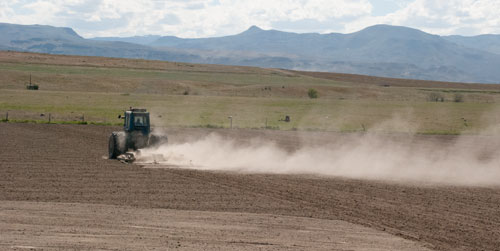
by Amanda Smith, Associate Editor
When it comes to happy cows and crops, nutrition is vital, noted Eric Young, in a recent Miner Institute Farm Report. As in the cow, achieving maximum soil fertility requires a balanced and well-orchestrated approach.
Soil fertility is often the starting point to determine crop nutrient needs; soil testing is only part of this process. "Fertility in the field is an integration of the growing crop, all soil management factors and their interactions in a given year," noted Young.
Today, there is a laundry list of fertility additives, yet many are discussed without regard for manure history, soil type and pH.
Soil pH, said Young, is often neglected, despite having a tremendous impact on phosphorus (P) availability and microbial activity. As pH drops from 7 to 5, aluminum and iron react with phosphate anions making them unavailable for crop uptake. At a pH under 6, most of the added P will be removed from solution before crops can use it; lime should be added before purchased fertilizer to raise the soil pH.
Organic matter and drainage capacity are both key to nitrogen's potential. Organic matter contains 5 percent N on average. The more organic matter, the better the potential for plant-available N release during the growing season. Weather, though, has the largest impact on crop yield potential and N dynamics in any given year.
While many crop inputs are needed, we shouldn't make additive decisions blindly. Remember, not all nutrients will be needed at the same time, place or amount and that weather impacts each component differently.









